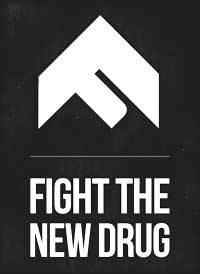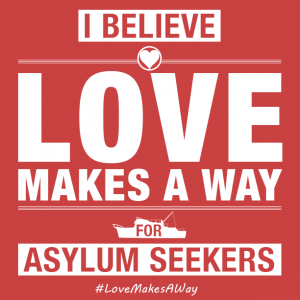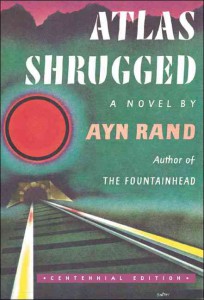The Good and the Bad of the Self-Referential Church
 In an article on churchleaders.com Thom Schulz talks about the growing numbers of those who are “Done with Church.” His insight is the distinction he makes between this cohort and what we normally mean by the de-churched. These are not those who have simply drifted away out of boredom or a sense of the church’s irrelevance. They are not consumer-Christians, takers-not-givers, dissatisfied with the product and unwilling to ask-not-what-your-church-can-do-for-you. Rather, these are active, involved, motivated leaders and contributors who have thrown in the towel when it comes to the church machine. They retain a strong faith, and even a strong call to ministry, but find, for some reason, that their involvement in a church organisation is no longer tenable.
In an article on churchleaders.com Thom Schulz talks about the growing numbers of those who are “Done with Church.” His insight is the distinction he makes between this cohort and what we normally mean by the de-churched. These are not those who have simply drifted away out of boredom or a sense of the church’s irrelevance. They are not consumer-Christians, takers-not-givers, dissatisfied with the product and unwilling to ask-not-what-your-church-can-do-for-you. Rather, these are active, involved, motivated leaders and contributors who have thrown in the towel when it comes to the church machine. They retain a strong faith, and even a strong call to ministry, but find, for some reason, that their involvement in a church organisation is no longer tenable.
As an employed pastor, whose very livelihood and expertise is dependent upon the organised church, who has invested time, money, health, and youth into the organised church… this is a scary thought. It’s scary for two reasons:
1) What does this say about the the organisation(s) to which Gill and I belong, and depend upon, not only for our bread-and-butter, but also for the way in which we seize the depths of life’s purpose and aspirations? and
2) I often want to join their ranks, for I share much of the disillusion.
The second of these places me at the beginning of my thoughts into the question of what is wrong. The first of these forces us to the heart of the matter.
The question of what is wrong is a problem with two-sides, the self-referential church:
Here’s one side of the coin:
You know it when you see it: when the organisation becomes its own ends. There is a caricature: the highly-institutionalised bureaucratic husk in which the performing of sacred rituals is the centre of life. Mission is reduced to the maintenance of those rituals and, apart from acts of service that maintain the necessary infrastructure, only passivity is expected. The time, focus, and energy of individual members, and of the collective as a whole, goes into the maintenance of the organisation’s own existence. The self-referential church.
It is a caricature of course. While some may readily apply it to churches that are further up the candlestick than most, that is not the marker that I’m using. There are traditional churches who have avoided this plague. And there are many, many evangelical seeker-sensitive churches that have not. These involve a functionalised “evangelism” aimed at getting bums on seats in order to listen to a weekly monologue and give their tithe. They are served by many hours of volunteers and staff devoted from everything from the building to the entertainment of youth, from the music and sound desk to the morning tea roster, and everything in between and surrounding. These churches can just as easily fit the caricature.
The self-referential church: when the spiritual journey becomes a sterile lurch from Sunday to Sunday.
No wonder the motivated ones are leaving. These are the ones who have DNA grounded in the stuff of a life-changing gospel. They often have had experiences in, with, and through the gathered people of God that have been life-changing encounters with their Saviour and Lord. They have gifts that have been tempered through some fire. And they long to be part of God’s mission – to build the kingdom, change the world. They invested in the church with this in mind, even as they were aware that it wasn’t all glitz and glamour and breakthrough, it was often about serving in season and out of it, and times of self-denial and menial work.
They leave, not because of the type of the labour, but the nature of the seed being planted by the well-oiled machine. When that seed is found to be church-shaped and not Jesus-shaped, well, it’s either time to break the machine and fix it, stay in the machine and be broken by it, or leave.
Many leave.
Here’s the other side of the coin:
Jesus loves his church. The church is the point, for Jesus is about drawing people to himself and making them a people that reflect his truth and his love.
You should see it when it works! A crisis happens, and the community rallies – people are supported, embraced, loved, helped. A lost person is encountered – and they are welcomed, and fed: supported, and embraced, and loved, and introduced to Jesus who does all that also, but in the deeper parts, as exhorters, intercessors, truth-speakers, carers, and leaders speak life, life and more life. The church must exist, and needs to exist!
It is necessary for a healthy life-giving church to be self-referential in some sense. A healthy community is one in which the members deliberately invest in themselves, who choose to spend time together, who are honest with one another, and seek to fix whatever fractures appear. Mission and church go together: “by this shall all people know that you are my disciples, if you have love one for another…”
I know of a missional community meeting in a large city. A good church community of this sort should have a clearly defined “out” – an outward looking missional activity. They do some of that sort of of stuff, but in the main they have realised that a lot of their “in” is also their “out.” In a large city full of disconnected people, their cohesive community, an “extended family” of sorts, speaks of the love and life of Christ and reaches out as much, if not more, than any outreach program.
It can be a joy for a church to come together weekly, and for people to serve one another in that gathering. Sundays can be a highlight, a time of celebration and thanksgiving; and a true way of being fed and resourced and lifted up for life and the work of life. God bless those that help this weekly machinery turn, to bless their brothers and sisters in this way.
Why would you want to leave?
But they are, and we must get to the heart of the matter:
Two sides of the “self-referential” coin. What is the difference?
It’s not “mission.” The first generation of the “Done with Church” left many years ago. They formed or joined parachurch organisations and mission agencies. They promoted evangelism or social work. And this blesses and has it’s blessing. But “mission” is also its own self-referential coin. The organisation that lurches from outreach program to outreach program fits the problem with it’s “mission” as much as another organisation fits with it’s Sunday formula.
It is partly bureaucracy. Sometimes bureaucracy serves, and sometimes it demands service. The organisation that is unable to reform its bureaucracy and hold it loosely and flexibly ends up conforming reality to its own shape. This almost defines negative self-referentiality, and those leaders who are unable to fix it, flee.
It is partly traditionalism. Sometimes tradition serves, and sometimes it demands service. The organisation that throws out everything disconnects itself from motivational currents and beaches itself. The organisation that clings to all hides in the lee of a self-made rock and goes nowhere. Leaders who look to where the river runs may end up searching for another boat.
It is most definitely about discipleship. This is the heart of the matter.
Gill and I have been in full-time ministry for 18 years or so now. We’ve seen some fruit. And very little of it is in the church organisation. Whatever outcomes have existed within the organisation are fleeting – congregations come and go, groups band and disband, structures are built and fall – and this is good, because these outcomes are not “fruit”, they are gardening tools or garden beds that have helped the fruit to grow. They work for a time, and then they wear and have had their day.
No, we have found that the real fruit is in people: Relationships that now transcend continents. Lives that have gone from a broken A to a delightful B in a way that can only be the work of Jesus. Strangers welcomed, and life shared, even if only a little bit. Leaders raised up. Cruel people resisted. Broken people embraced. Authentic community formed, sustained, enjoyed. Family as team, and (in different but related way) team as family.
Church organisations are good at investing in programs: outreach programs, growth programs, educational curricula, administrative efficiencies etc. We have processes and procedures. But these are nothing without investment in people, as persons.
You can send someone off for theological education (or bring it to them), but unless you disciple them and walk alongside them you will have, at best, a lonely theological clone; at worst an arrogant know-it-all with knowledge but little of the spirit, correct but rarely right. You can assess someone for ministry, and give them regular reviews; but unless you invest in them, pray with them, mentor them, and walk with them as they seek the path of their obedience to God, all you have done is make them a cog in the machine, not a member of the body of Christ. You can introduce a new program to church; but unless you raise up the leaders, invest in them, help them to see the vision, seize the reigns, and grow in their own gifting, you will only burn your people out and grow bitterness and dissent. You can teach from the pulpit; but unless you also help people to worship and thirst for the things of God, the best you will do is build your own preaching pedestal and further divide Sunday from Monday in the lives of those that matter.
You see, the self-referential church does work, but only when it references itself in, with, and through its people. When it references itself by its organisation, or its structure, or any other ecclesial tool, it is fruitless and those who are motivated to see real fruit may, eventually, leave.
It is why we are tempted to join their number. But it is also why we currently stay: while the fruit of God can be found in with and through us in our current context – the real fruit, of God at work in real lives including our own – of investing and being invested in, of forming and being formed.
That’s the call of life. That’s the purpose. That’s the task. Whatever happens next, wherever we find ourselves, we’ll never be done with that.








